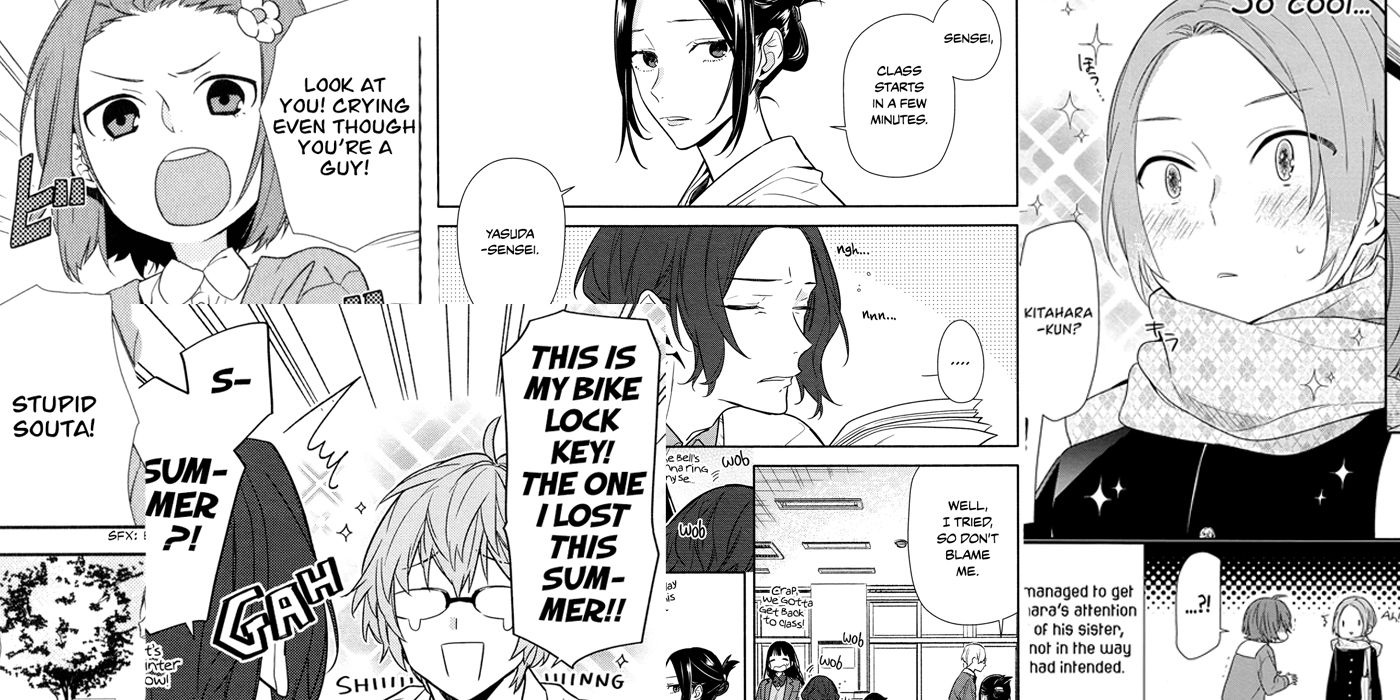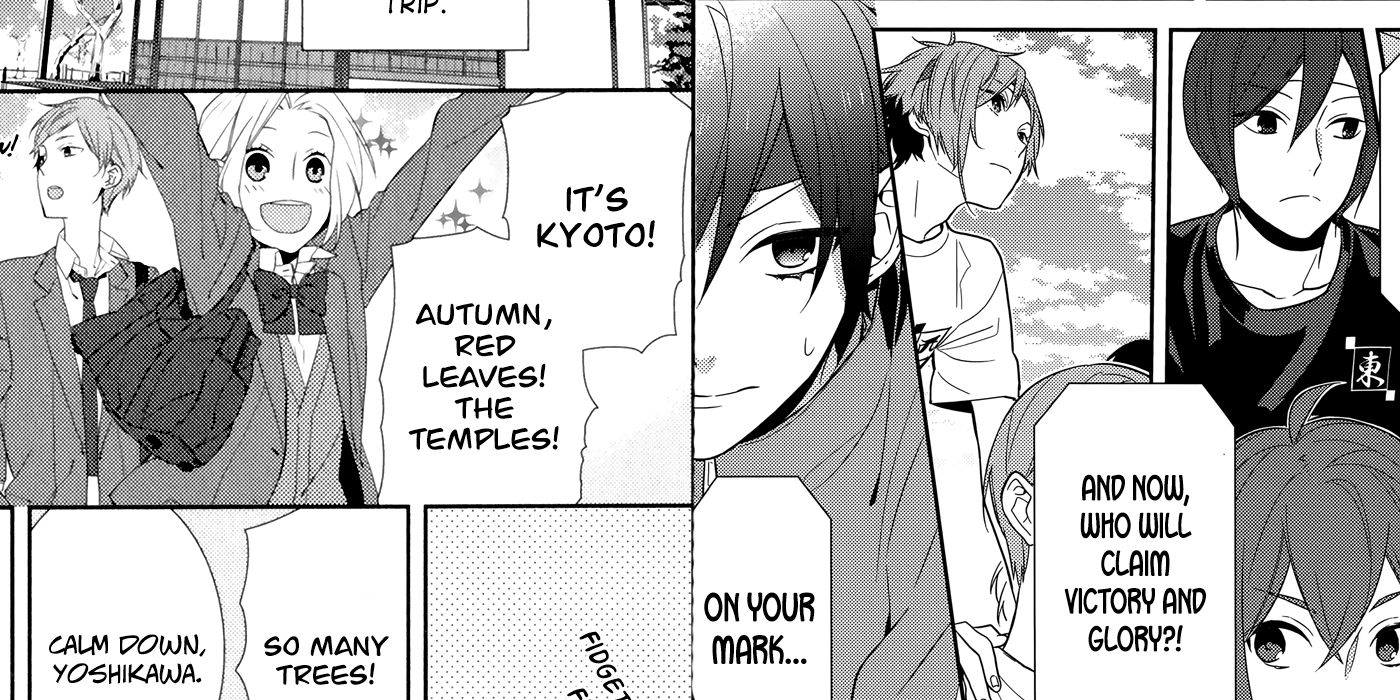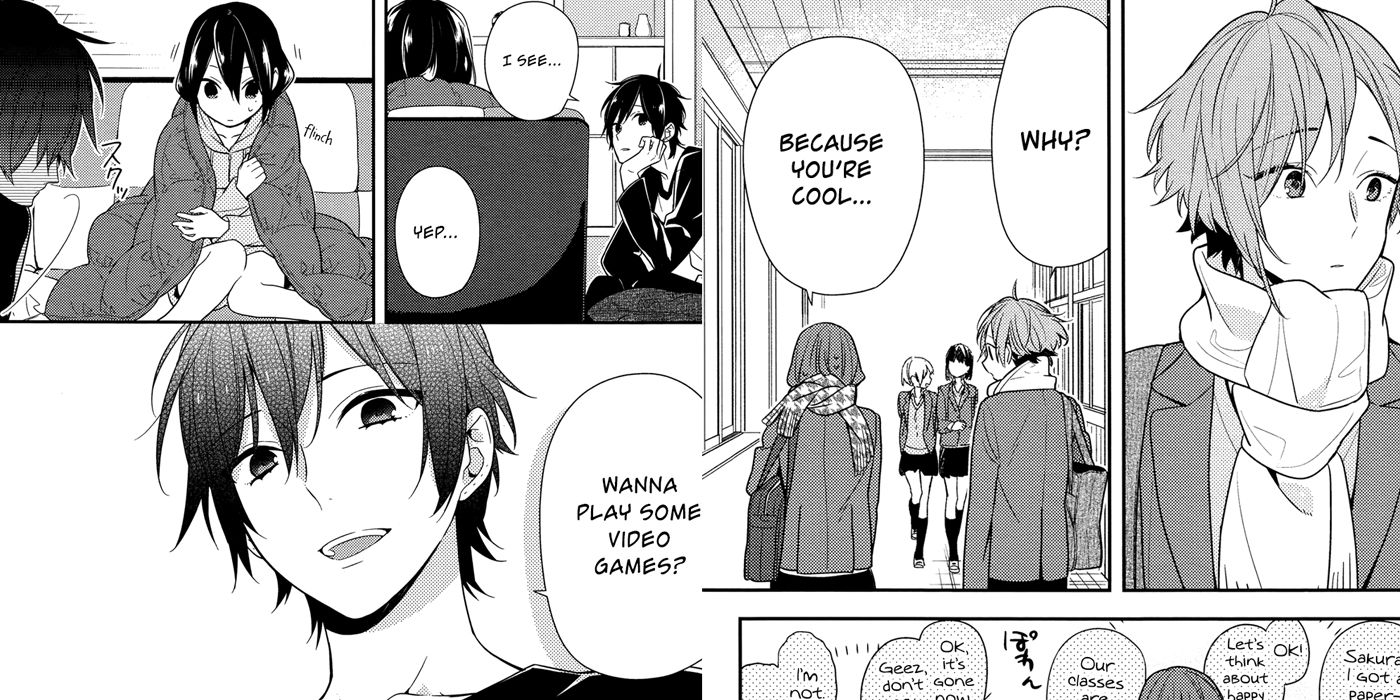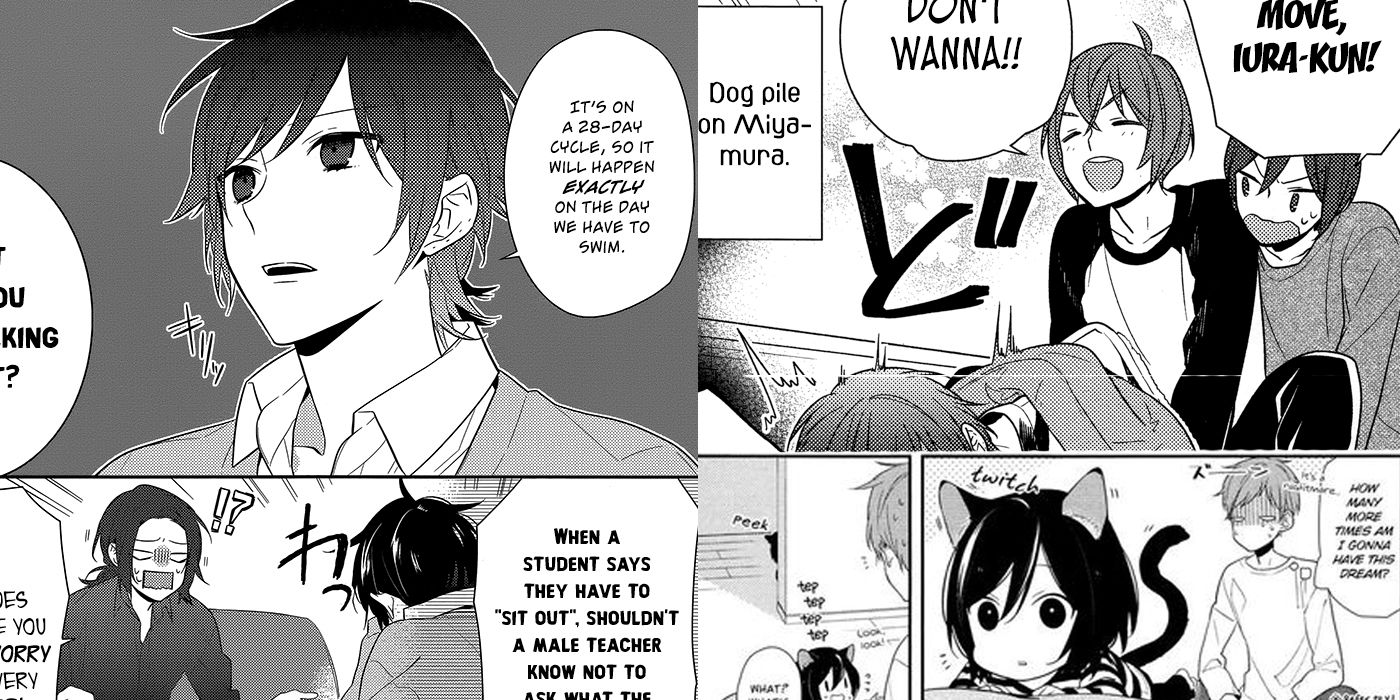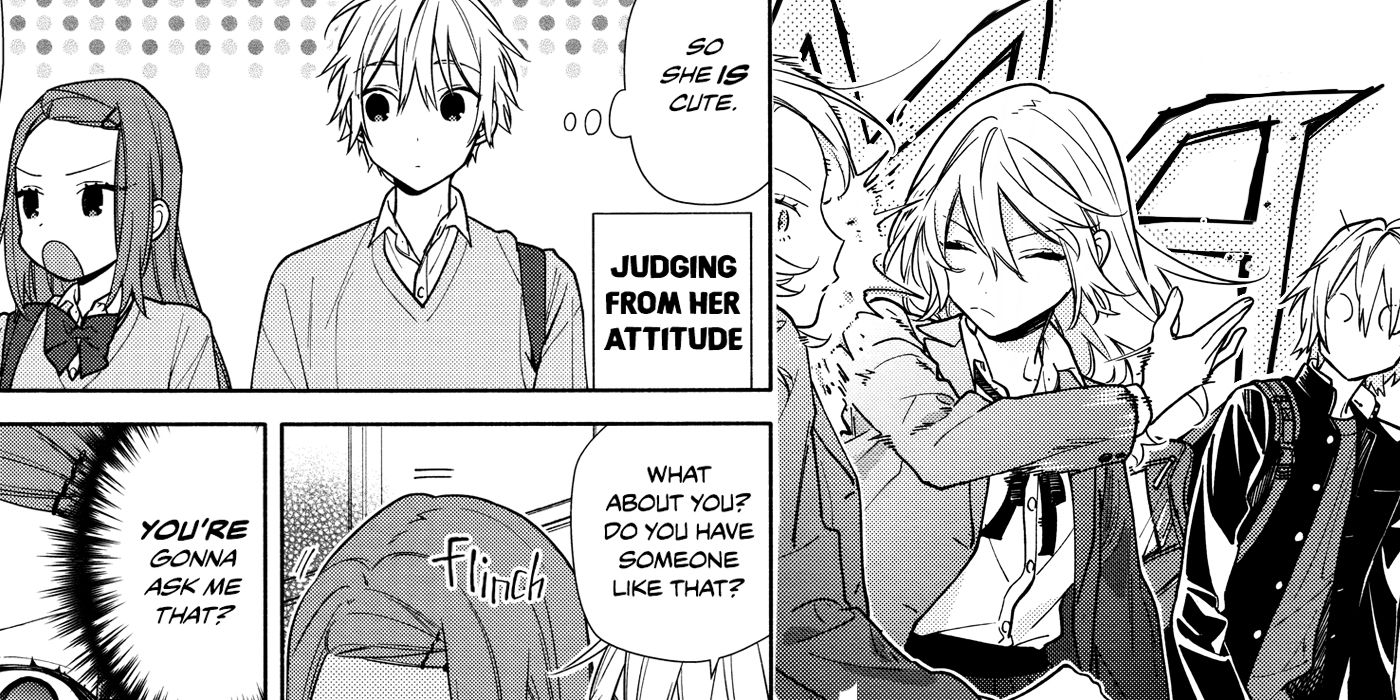Horimiya is an anime based on a manga adapted from a web comic that began in 2007. It's worth noting that both the web comic and manga would continue to run for more than ten years, with the manga accumulating more than one hundred chapters and the web comic having nearly 600. However, the anime adaptation is much shorter, with only thirteen episodes total.
Due to its shortened length, quite a bit of material was inevitably cut out. Story arcs, characters, further insight into the supporting cast, and some of the best gags in the series had to be sacrificed to condense the story to fit the limited runtime. Here's a look at all the key material that was skipped over.
The Characters That Were Adapted Out
There are a handful of major characters that were either relegated to cameo appearances or removed completely from the anime. Among them is Yuna, who is first introduced in the second chapter of the manga as a bully from Souta's class. Despite the rocky start to their relationship, she eventually becomes good friends with Souta and later becomes a frequent guest at the Hori household. In the anime, Yuna only appears in Episode 12. Her sudden appearance was confusing to anime-only fans, as she was essentially thrown in without any proper introduction, and she makes no further appearances afterward.
In the manga, there are three main teachers, Yasuda, Terajima, and Nakamine. Yasuda is Hori and Miyamura's English teacher, Terajima is their homeroom teacher, and Nakamine is their eccentric science teacher. As with most power trios, they tend to balance each other out with Reiko acting as the voice of reason, Yasuda acting as her oft scolded, laidback counterpart, and Nakamine being a complete wildcard that somehow maintains a close friendship with both teachers.
In the anime, Reiko only makes a very brief cameo in the anime while Yasuda has a few appearances that don't add much to his character. Nakamine doesn't appear at all.
Finally, there's Kitahara, a boy that Shu's younger sister, Motoko, has a crush on. The usual carefree Shu proves to be the typical over-protective big brother and isn't keen on the idea of his sister dating. However, Kitahara ultimately finds Shu's attempts at being overprotective to be very cool and develops a deep admiration for him to Motoko's dismay. He never makes an appearance in the anime.
Quintessential Chapters to Every Rom-Com Set in a School
As with every rom-com set in a school, the Horimiya manga was able to cover pretty much every important event that occurs in a Japanese high school. The school trip to Kyoto, the Sports Festival, and Valentine's Day chapters. The school trip arc in particular played a big part in Miyamura's growth as it occurs relatively early on in the story and showcases how far he's come from a lonely outcast to someone accepted within Hori's inner circle.
As the sports festival and Valentine's Day chapters occur much later on, they admittedly aren't as essential for story progression. But both chapters do a good job of once again showing how far Miyamura has come and how much his world has expanded since meeting Hori. The Valentine's Day chapter also adds a bit more spice as it focuses on couples that are both established and yet to be established.
Expanding on Relationships Between the Cast
A common complaint among fans that have only seen the anime is that the relationships between most of the supporting cast don't feel fully fleshed out. Luckily, the same cannot be said for the manga. Many of the characters go on to forge close friendships that are further explored in later chapters, sometimes between existing relationships and other times establishing completely new ones.
The sibling-esque relationship between Sawada and Miyamura was one that was teased a bit in the anime, but didn't get much development beyond Sawada's introductory episode. In the manga, Sawada eventually does become close enough to Miyamura to the point that she frequently visits his home to sleep over and play video games. And while they do still bicker a lot, Sawada is openly willing to admit that Miyamura is one of the few guys she can feel comfortable around.
Yanagi and Sakura also eventually forge a close friendship as they're able to bond over liking the same manga. As is typical with high school settings, rumors do start to spread about the pair dating, but their relationship remains platonic to the very end. While Yanagi and Sakura are shown to be friends in the anime, they aren't shown to be at the same level of closeness as they are in the manga.
Gag-Centered Chapters, Boys Being Boys, and Meowmura
There are entire chapters that are just plain silly, and some of the best gags in the series can be found here. There are storylines that go from the typical, wholesome boys' slumber party to the more ridiculous Miyamura and Sengoku really don't want to attend swimming classes, so they come up with increasingly ridiculous lies to get out of it.
Some of the series' best jokes come from these chapters, and it's really a shame that they may never be fully voiced and animated. But these storylines were likely cut because they don't offer much in the way of story progression or character development.
At the end of certain manga volumes, there are extra stories that follow Tooru's strange dreams about a tiny cat version of Miyamura, otherwise known as Meowmura. Later extras would feature some other cast members as tiny cats -- or in the case of Yuki, a mouse. These admittedly aren't necessary to the overall plot either, but they're cute, and fun. Plus, who wouldn't want to hear Kouki Uchiyama make cute little cat noises as Meowmura?
A Look Into the Past and the Future
Close to the end of the manga's life span, three special chapters were released. Two that takes place twenty years into the future, and one that takes place twenty years in the past. The time-skip chapters follow Souta and his childhood friend, Yuna as they enter the same high school as Hori and Miyamura.
The pair have become close enough that many have assumed that they're already dating, and it's even heavily implied that the pair have developed a mutual attraction for each other. The prequel chapter follows Hori's high school-aged parents and shows how they met and eventually fell in love.
They're both ultimately just fun little extras that aren't necessary to the overall narrative, but it's nonetheless incredibly fun to see Hori's family in different stages of their lives. It also gives further insight into their characters and the many quirks they seem to share, whether they realize it or not. The same can be said for most of these skipped storylines, they're fun glimpses into the characters' everyday lives, from quiet moments between the titular couple to loud and silly moments shared with friends. These chapters are truly slice-of-life at their finest.

.png)
